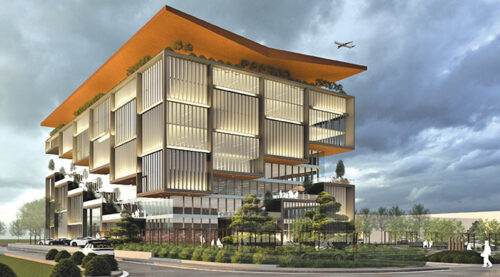SUSTAINABLE BUILDING PRACTICES AND BUILDING BYE-LAWS
Sustainable Building Practices and Building Bye-Laws: Paving the Way for a Greener Future
Sustainable building practices have gained significant prominence in recent years as the world grapples with the pressing need to combat climate change and reduce the environmental footprint of construction and infrastructure development. Building bye-laws play a pivotal role in shaping and regulating these practices, serving as a cornerstone for achieving more eco-friendly and resilient built environments. In this article, we delve into the key aspects of sustainable building practices and the crucial role that building bye-laws play in fostering a greener future.
1. Understanding Sustainable Building Practices
Sustainable building practices encompass a wide range of strategies, technologies, and design principles aimed at minimizing the negative impacts of construction on the environment while optimizing resource efficiency. Key components of sustainable building practices include:
– Energy Efficiency:
- Incorporating energy-efficient design elements, such as improved insulation, energy-efficient windows, and energy-efficient HVAC systems, to reduce energy consumption and greenhouse gas emissions.
- The use of renewable energy sources like solar panels and wind turbines to generate clean and sustainable power for buildings.
– Water Conservation:
- Implementing water-saving fixtures, rainwater harvesting systems, and wastewater treatment to reduce water consumption and strain on local water resources.
– Materials Selection:
- Prioritizing the use of environmentally friendly and locally sourced materials, as well as recycled and upcycled materials, to minimize the carbon footprint associated with construction.
– Waste Reduction:
- Promoting construction waste management and recycling practices to minimize the disposal of construction debris in landfills.
– Sustainable Site Planning:
- Ensuring responsible land use, preservation of natural habitats, and minimizing the disruption to ecosystems during construction.
2. The Role of Building Bye-Laws
Building bye-laws, often referred to as building codes or regulations, are legal frameworks established by local, state, or national governments to set minimum standards for construction and ensure the safety and welfare of occupants. These codes have traditionally focused on structural integrity and safety, but in recent years, they have been adapted to address sustainability concerns. Key elements of building bye-laws that promote sustainable construction include:
– Energy Performance Standards:
- Mandating minimum energy efficiency standards for buildings, encouraging the use of energy-efficient materials and systems.
– Green Building Certification:
- Some building codes incentivize or require compliance with green building certification programs such as LEED (Leadership in Energy and Environmental Design) or BREEAM (Building Research Establishment Environmental Assessment Method).
– Water Conservation Requirements:
- Imposing restrictions on water usage in buildings and promoting the installation of water-saving fixtures.
– Waste Management Regulations:
- Requiring construction and demolition waste management plans to minimize the environmental impact of waste disposal.

– Site Development Guidelines:
- Regulating land use and development to protect natural resources and ecosystems.
3. Challenges and Future Directions
While sustainable building practices and building bye-laws have made significant strides, several challenges remain on the path towards a greener future:
– Enforcement and Compliance:
- Ensuring that builders and developers adhere to sustainable building codes remains a challenge. Strengthening enforcement mechanisms is crucial.
– Cost Implications:
- Sustainable building practices can incur higher upfront costs. Finding ways to make these practices more cost-effective is essential for widespread adoption.
– Technological Advancements:
- Embracing emerging technologies, such as smart building systems and advanced energy-efficient materials, will be pivotal in achieving higher levels of sustainability.
– Education and Awareness:
- Promoting awareness among stakeholders, including builders, architects, and the general public, is vital for driving sustainable building practices.
Sustainable building practices and building bye-laws are indispensable tools in the fight against climate change and the promotion of environmentally responsible construction. These practices not only reduce the carbon footprint of buildings but also enhance their resilience and long-term viability. As we continue to witness the global shift towards sustainability, the collaboration between policymakers, the construction industry, and the public is key to fostering a greener and more sustainable built environment for generations to come.


